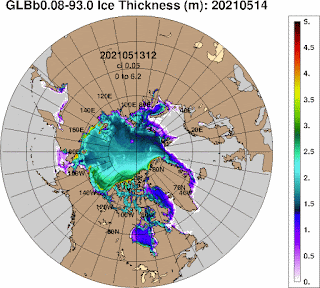system is an ornery beast which overreacts even to small nudges” (Wally Broecker)
- Lateral and vertical ice melt, including formation of water films on ice;
- Reduced CO2 intake by the warming oceans due to warming. Currently the oceans absorb between 35-42 percent of all CO2 emitted into the atmosphere and around 90 percent of the excess heat from the rise in greenhouse gases;
- Warming, desiccation, deforestation and fires over land areas;
- Release of methane from permafrost and polar sediments;
These feedbacks drive a chain reaction of events, accelerating the warming, as follows:
- Melting snow and ice expose dark rock surfaces, reducing the albedo of the polar terrains and sea ice in surrounding oceans, enhancing infrared absorption and heating.
- Fires create charred low-albedo land surfaces.
- An increase in evaporation raises atmospheric vapor levels, enhancing the greenhouse gas effect.
- Whereas an increase in plant leaf area enhances photosynthesis and evapotranspiration, creating a cooling effect, the reduction in vegetation in darkened burnt areas works in the opposite direction, warming land surfaces.
 |
| Figure 1. The 2021 global climate trends (Hansen, 2021, by permission) |
The current acceleration of global warming is reflected by the anomalous rise of temperatures, in particular during 2010-2020 (Hansen 2021, Figure 1 above). Consequently, extensive regions are burning, with 4 to 5 million fires per year counted between about 2004 and 2019. In 2021, global April temperatures are much less than in 2020, due to a moderately strong La Nina effects.
 |
| Figure 2. The Palaeocene-Eocene Thermal Maximum recorded by benthic plankton isotopic data from sites in the Antarctic, south Atlantic and Pacific (Zachos et al., 2003). The rapid decrease in oxygen isotope ratios is indicative of a large increase in atmospheric temperatures associated with a rise in greenhouse gases CO₂ and CH₄ signifies approximately +5°C warming. |
 |
| Figure 3. (A) Simulated atmospheric CO₂ at and following the Palaeocene-Eocene boundary (after Zeebe et al., 2009); (B) Global CO₂ and temperature during the last glacial termination (After Shakun et al., 2012) (LGM - Last Glacial Maximum; OD – Older dryas; BA - Bølling–Alerød; YD - Younger dryas). Glikson (2020). |
The triggering of a mass extinction event by the activity of organisms is not unique to the Anthropocene. The end Permian mass extinction, the greatest calamity for life in geologic history, is marked in marine carbonates by a negative δ¹³C shift attributed to oceanic anoxia and the emission of methane (CH₄) and hydrogen sulphide (H₂S) related to the activity of methanogenic algae (“purple” and “green” bacteria) (Ward, 2006; Kump, 2011). As a corollary anthropogenic climate change constitutes a geological/biological process where the originating species (Homo sapiens) has not to date discovered an effective method of controlling the calamitous processes it has triggered.
Earth and Paleo-climate scientist
The University of New South Wales,
Kensington NSW 2052 Australia
The Asteroid Impact Connection of Planetary Evolution
http://www.springer.com/gp/book/9789400763272
The Archaean: Geological and Geochemical Windows into the Early Earth
http://www.springer.com/gp/book/9783319079073
Climate, Fire and Human Evolution: The Deep Time Dimensions of the Anthropocene
http://www.springer.com/gp/book/9783319225111
The Plutocene: Blueprints for a Post-Anthropocene Greenhouse Earth
http://www.springer.com/gp/book/9783319572369
Evolution of the Atmosphere, Fire and the Anthropocene Climate Event Horizon
http://www.springer.com/gp/book/9789400773318
From Stars to Brains: Milestones in the Planetary Evolution of Life and Intelligence
https://www.springer.com/us/book/9783030106027
Asteroids Impacts, Crustal Evolution and Related Mineral Systems with Special Reference to Australia
http://www.springer.com/us/book/9783319745442
The Event Horizon: Homo Prometheus and the Climate Catastrophe
https://www.springer.com/gp/book/9783030547332
• Seasonal origin of the thermal maxima at the Holocene and the last interglacial - by Samantha Bova et al. (2021)
https://www.nature.com/articles/s41586-020-03155-x
• Could temperatures keep rising? - by Sam Carana (2021)
• Blueprints of future climate trends - by Andrew Glikson (2018)
https://arctic-news.blogspot.com/2019/09/blueprints-of-future-climate-trends.html
https://www.nature.com/articles/nature10915
https://www.scientificamerican.com/article/the-last-great-global-warming

























